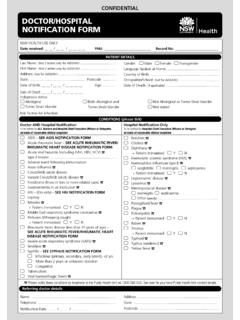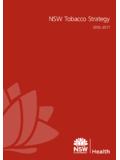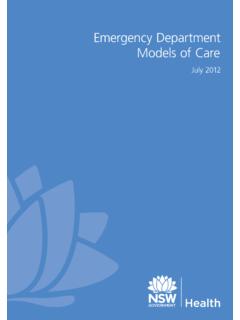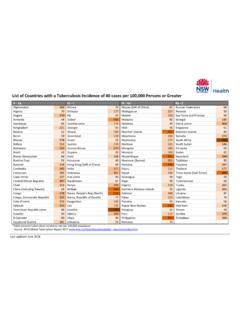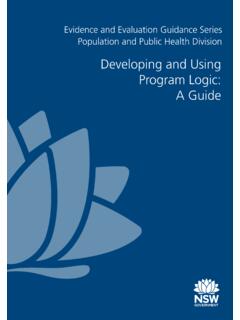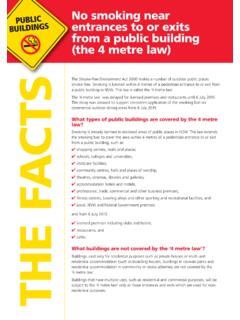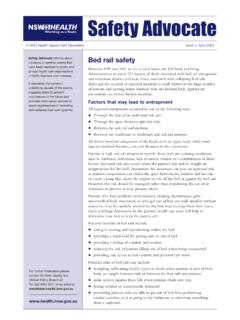Transcription of SECTION 3.3 UNDERSTANDING RISK TAKING BEHAVIOUR
1 SECTION 3 .3 UNDERSTANDING RISK TAKING BEHAVIOUR 79 UNDERSTANDING RISK TAKING BEHAVIOUR PETER CHOWN Most youth health problems are a consequence of risk- TAKING behaviours and exposure to social and environmental risk factors including accidents and injuries, substance use and mental health problems. It is important to understand, though, that risk- TAKING is a normal part of adolescent development: young people typically experiment with new behaviours as they explore their emerging identity and independence.
2 While adults almost always view risk- TAKING in negative terms, not all risk- TAKING is dangerous or detrimental to a young person s health . In fact, a degree of risk- TAKING is essential for personal growth and development: it allows a young person to test their limits, learn new skills, develop competence and self -worth, and assume greater responsibility for their life (Clarke 2000) . Risk- TAKING BEHAVIOUR , however, is also central to the onset of many major youth health problems.
3 Risk- TAKING BEHAVIOUR can be problematic and requires intervention when it: Interferes with normal youth development Poses serious risks to the young person s health and safety Impairs healthy functioning Becomes an established part of the young person s lifestyle Risk- TAKING BEHAVIOUR by young people poses an even greater threat when it is characterised by: Ignorance (lack of prior experience or adequate information) Impulsiveness and thrill-seeking Cognitive immaturity (the inability to compre hend the consequences of BEHAVIOUR ) Low self -worth and feelings of inadequacy Extreme risk- TAKING often indicates other issues, such as recent or past experience of being a victim of sexual and physical assault, bullying, or child abuse and neglect.
4 Service providers can play a vital role in prevention and health promotion by using their consultations to: Screen for health risk factors in the young person s life through the HEEADSSS assessment Identify risk- TAKING behaviours the young person is engaged in Provide early intervention and health education appropriate to the developmental stage of the young person UNDERSTANDING RISK- TAKING For some young people, risk- TAKING is a way of resolving developmental challenges (for example, a young male who drinks heavily to prove that he is as grown-up as his peers).
5 For others, risk- TAKING may be a way of dealing with problems or escaping unhappy situations or feelings (such as a young woman who engages in sexual activity in response to her low self -esteem and feelings of worthlessness, or her experience of sexual assault) . While risk- TAKING BEHAVIOUR can constitute a major health problem in itself, it may also be an indicator of an underlying problem in the young person s life . Angry, acting-out BEHAVIOUR can mask depression, or it may reflect the young person s experience of violence.
6 Risk- TAKING behaviours which can have serious negative implications for young people s health include: Early and/or high risk sexual activity Drink driving Substance or alcohol abuse Running away from home Dropping out of school Criminal activity Severe dieting Dissociation Suicidal thoughts and talk self -harm Assaulting others SECTION Three - Chapter Three 81 PRACTICE POINT WHAT S NORMAL AND WHEN PRACTICE POINT WHAT S NORMAL AND WHEN TO WORRY TO WORRY Normal adolescent behaviours include: Worrying behaviours include.
7 Moodiness Wild mood swings Flare-ups Dramatic and/or persistent BEHAVIOUR change Open and talkative with friends, monosyllabic Isolation from peers with family Failing school performance or dropping out Actively striving for independence Violent or aggressive BEHAVIOUR Trying new experiences Dangerous drug and/or alcohol use To be like peers Loss of routine Sleeping in Excessive sleeping Critical and argumentative . Withdrawn, secretive or self -harming behaviours.
8 SECTION Three - Chapter Three ASSESSING THE DANGER OF RISK- TAKING Risk assessment should take place in the context of UNDERSTANDING that the co-occurrence of health problems and risk- TAKING behaviours is prevalent in young people . It is also important to screen for trauma and domestic violence as these can have an effect on a young person s vulnerability . IDENTIFYING RISK AND PROTECTIVE FACTORS The degree of health risk attached to a young person s BEHAVIOUR depends in part on the balance of risk and protective factors in a young person s life (Sanci 2001).
9 The greater the number of risk factors present in a young person s life, the greater the likelihood that they will engage in risk- TAKING behaviours (Bond et al . 2000) . When screening for risk factors, it is also important to identify protective factors in the young person s life . Research has shown that protective factors can act as a buffer to the negative effects of risk factors and risk- TAKING behaviours (Bond et al . 2000) . The most powerful protective factors in reducing morbidity among young people are connectedness and belonging to family, school and peers (Resnick, Harris and Blum 1993).
10 A completed HEEADSSS assessment (see chapter 3 .2), provides you with profile of the balance of risk and protective factors in a young person s life see Table 4 (on the opposite page) . ASSESSING THE DEGREE OF RISK The more risk factors in a young person s life, the more likely they are to experience harmful conse quences from their risk- TAKING BEHAVIOUR . When you are trying to determine the level of risk the young person faces, consider: The extent to which the BEHAVIOUR is compro mising the young person s safety, health and development.

